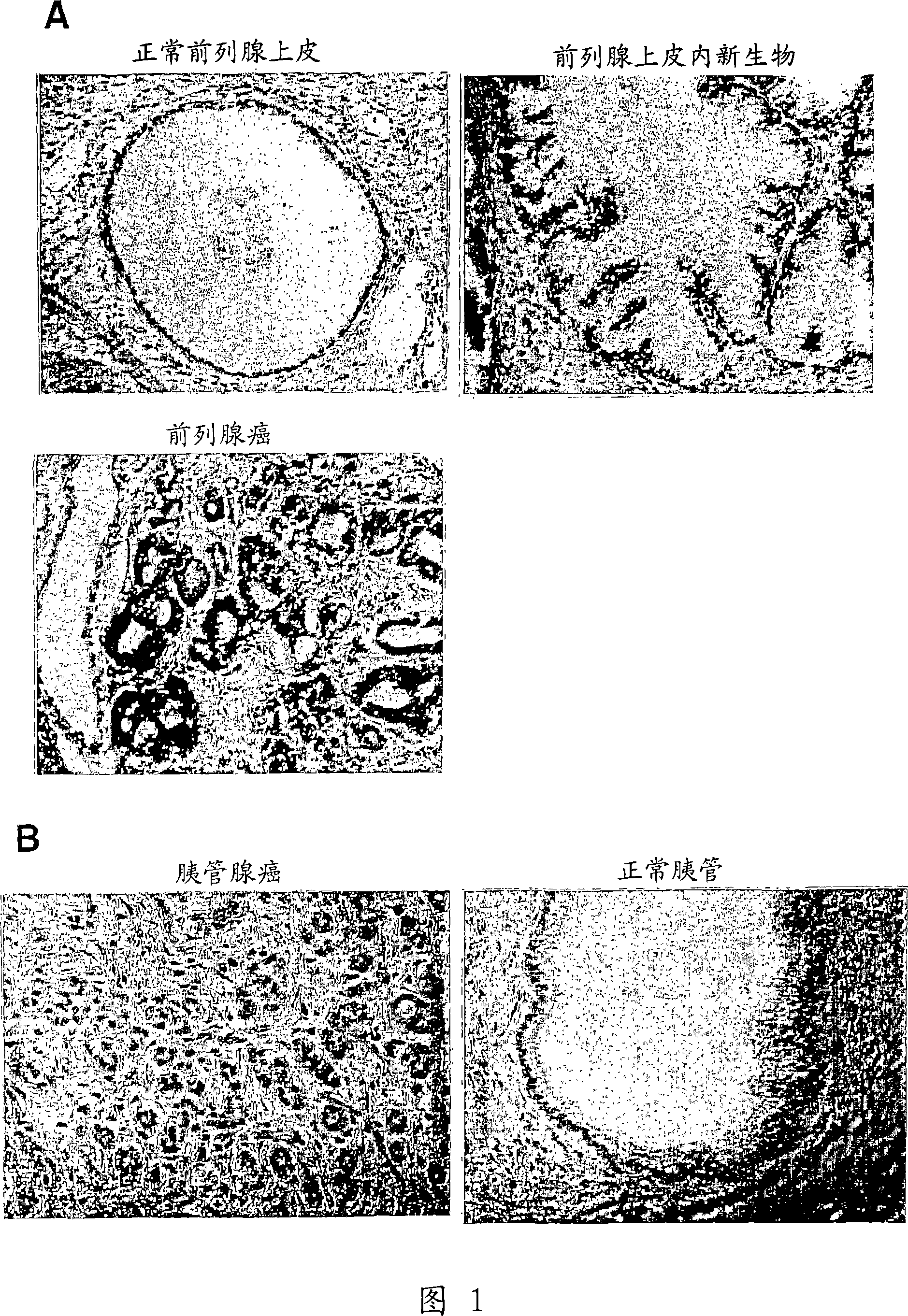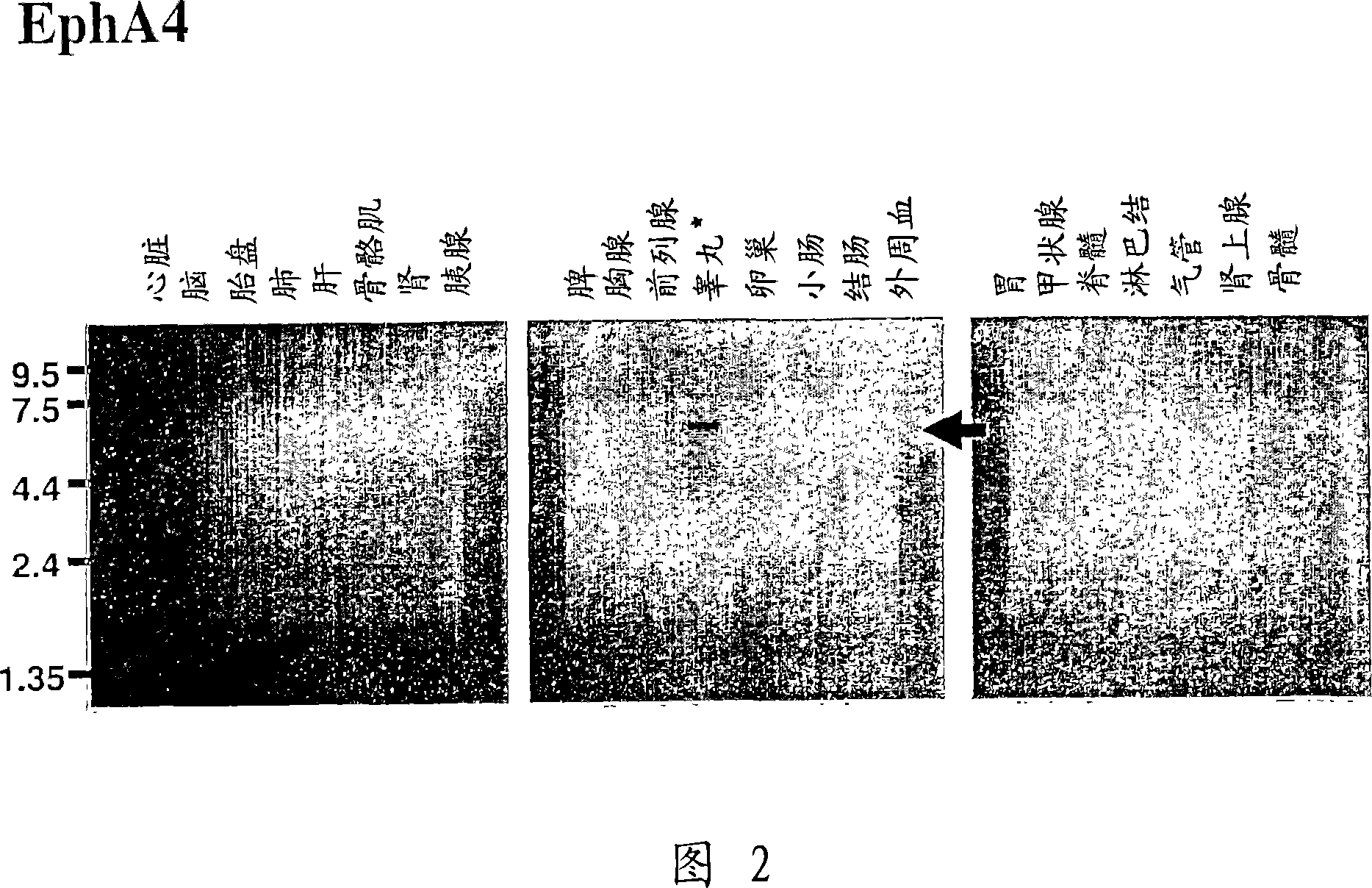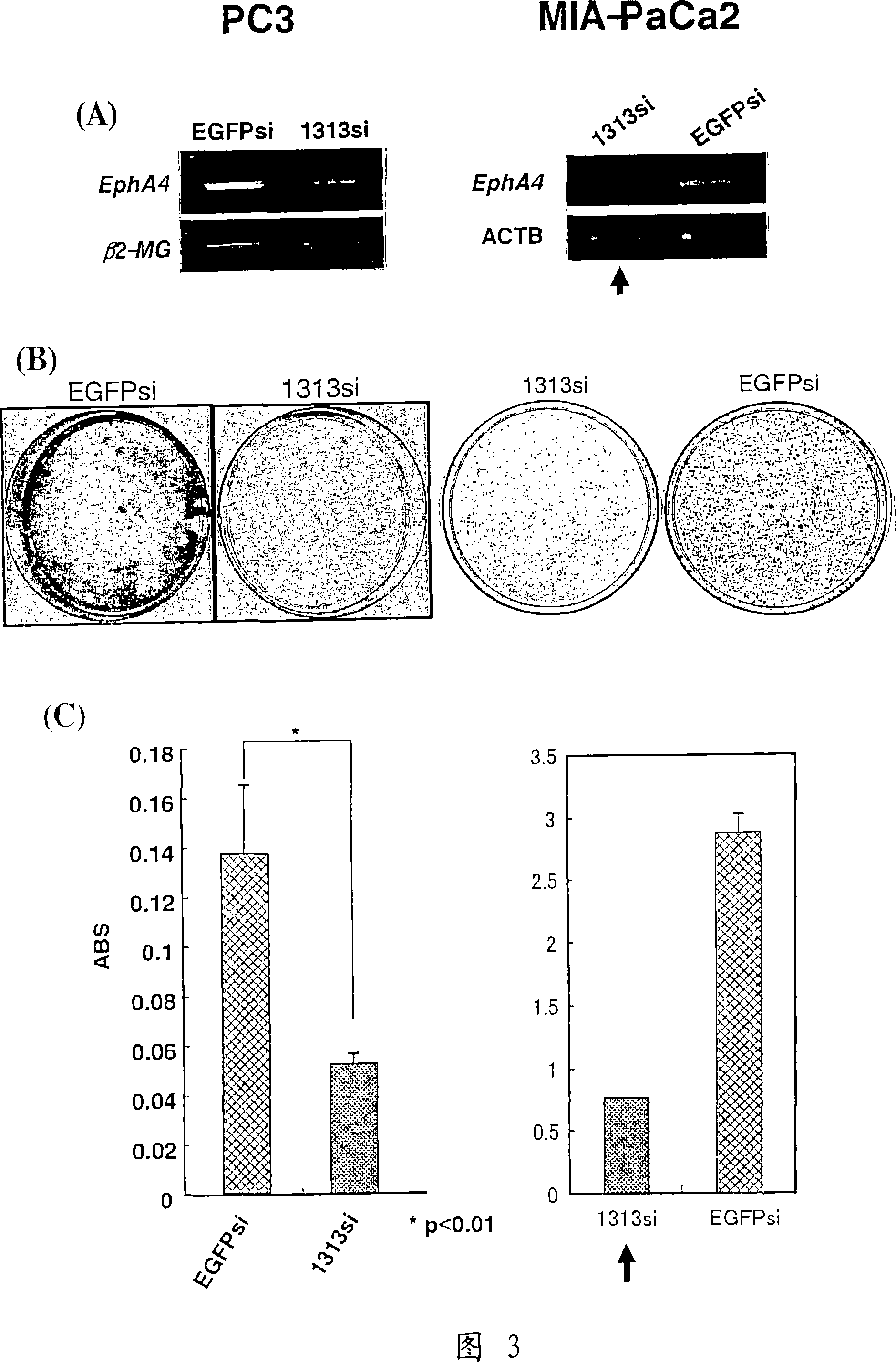EphA4 as therapeutic target of PRC and PDACa
A subject, compound technology, applied in the direction of DNA/RNA fragments, compound screening, antibody medical components, etc.
- Summary
- Abstract
- Description
- Claims
- Application Information
AI Technical Summary
Problems solved by technology
Method used
Image
Examples
Embodiment 1
[0219] 1. General method
[0220] Patient and Tissue Samples
[0221] Tissue samples were obtained with informed consent from 26 cancer patients undergoing radical prostatectomy. All surgical samples were in T2a-T3a clinical stage with or without N1, with a Gleason score of 5-9. Histopathological blood diagnosis was performed by a pathologist using LMM. All samples were buried in TissueTek OCT medium (Sakura, Tokyo, Japan) immediately after surgical resection, and stored at -80°C for future use. Among the 26 PRC tissues, 20 cancers and 10 advanced PINs had sufficient RNA quantity and quality for microarray studies.
[0222] Laser microbeam microdissection and T7-based RNA amplification
[0223] LMM and T7-based RNA amplification were performed as previously described. Prostate tumor cells and normal prostate ductal epithelial cells were selectively isolated using the EZ cutting system (SL Microtest GmbH, Germany) with a pulsed ultraviolet narrowbeam-focus laser accord...
Embodiment 2
[0248] 1. General method
[0249] Cell Lines and Tissue Samples
[0250] Human pancreatic cell lines PK45P, KLM1 and MIA-PaCa2 (ATCC number: CRL-1420) were obtained from Cell Resource Center for Biomedical Research, Institute of Development, Aging and Cancer, Tohoku University. Such cells are publicly available.
[0251] Isolation of Overexpressed Genes in PDACa Cells Using cDNA Microarray
[0252] Fabrication of cDNA microarray slides has been described (Ono K, Tanaka T, Tsunoda T, Kitahara O, Kihara C, Okamoto A, Ochiai K, Takagi T, and Nakamura Y. Cancer Res., 60:5007-5011, 2000) . For each analysis of expression profiling, cDNA microarray slides containing approximately 27000 DNA spots were prepared in duplicate. Briefly, total RNA was purified from PDACa cells, and normal pancreatic ductal epithelium was obtained by microdissection from 18 pancreatic carcinoma tissues. RNA suitable for microarray experiments was obtained based on performing T7 RNA amplification. Ali...
PUM
 Login to View More
Login to View More Abstract
Description
Claims
Application Information
 Login to View More
Login to View More - R&D
- Intellectual Property
- Life Sciences
- Materials
- Tech Scout
- Unparalleled Data Quality
- Higher Quality Content
- 60% Fewer Hallucinations
Browse by: Latest US Patents, China's latest patents, Technical Efficacy Thesaurus, Application Domain, Technology Topic, Popular Technical Reports.
© 2025 PatSnap. All rights reserved.Legal|Privacy policy|Modern Slavery Act Transparency Statement|Sitemap|About US| Contact US: help@patsnap.com



